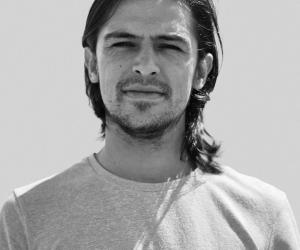Haroon Gunn-Salie creates site-specific art that attempts to rewrite history in post-Apartheid South Africa. Working across a range of disciplines, he uses reference points from his life to create artworks that, while deeply personal, are clear and direct so that they “can be understood in any context”.
“My work has to do with history and the fact that many historical things have not been corrected in South Africa,” he says in this interview with him at Design Indaba Conference 2014.
For “Zonnebloem Renamed”, Gunn-Salie replaced street signage in the Cape Town city centre, pasting the words “District Six” over references to Zonnebloem, the name the area adopted after the Apartheid government removed more than 60 000 of its residents in the wake of the Group Areas Act in 1982.
“It was an attempt by the government to permanently erase the history and identity of the area and its people,” says Gunn-Salie. He sees the artwork as a vigilante act of social justice as well as an expanded idea of what printmaking can be.
Another site-specific work tells the history of the area through the stories of the people who lived there. “Witness” is an “intergenerational collaborative artwork” installed in a derelict building in District Six and executed with the input of its residents.
The work was inspired by Gunn-Salie’s own life, which began in prison where his mother was detained for her anti-Apartheid activities.
The first few years of my life were vividly retold to me by my parents, an underground life driven by a passion of resistance remembered only through narrative, not through lived direct experience, he explains.
The notion of participant observation had a profound impact on his work. “When one listens to somebody speaking, you become the witness to that story. The listener is then able to retell that lived experience through the narrative of others.”
“Witness” thus tells the story of District Six through the memories of those who lived there. Gunn-Salie describes himself as “a young person looking outwards for content, working with old people with immense life experience as opposed to blurting out my own opinions”.
The Cape Town-born artist is at work on a large-scale installation that was inspired by the mass funeral for Imam Abdullah Haron after whom he is named. The Muslim cleric, an outspoken critic of the Apartheid government, was assassinated by its Security Branch. An archival photo of his funeral showed thousands of men seen from above wearing traditional keffiyeh hats. Gunn-Salie made 150 plaster and marble casts of the hats and suspended them in an installation that people can interact with. “People will be able to walk underneath and become a part of the scene. The people are not there, they are essentially ghosts, there but not there.”
Gunn-Salie was part of the 89plus programme at Design Indaba Conference 2014. 89plus is an international, multi-platform research project focusing on the generation of innovators born in or after 1989. It was founded by Hans Ulrich Obrist, co-director of the Serpentine Gallery in London, and Simon Castets, director and curator of the Swiss Institute, co-founded 89plus in 2013.








